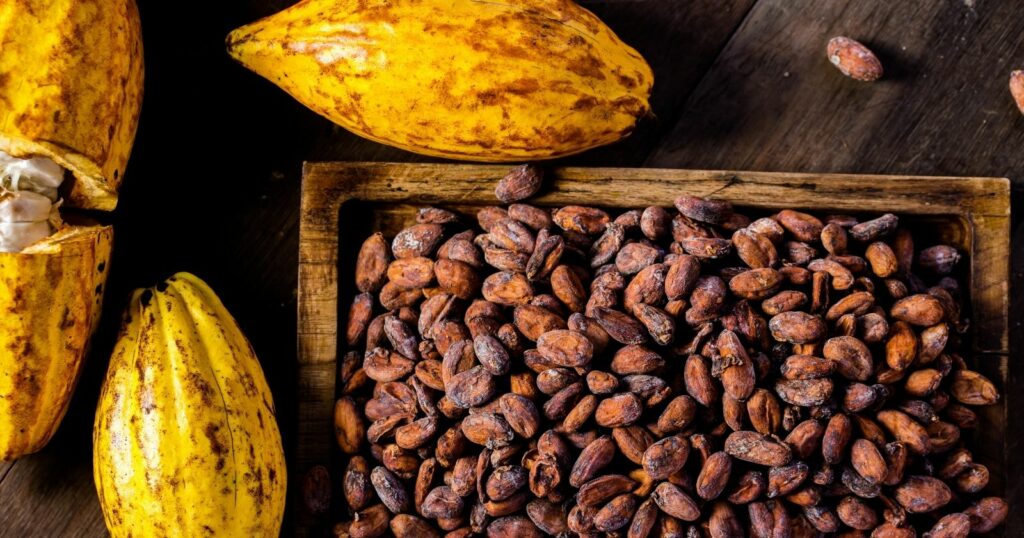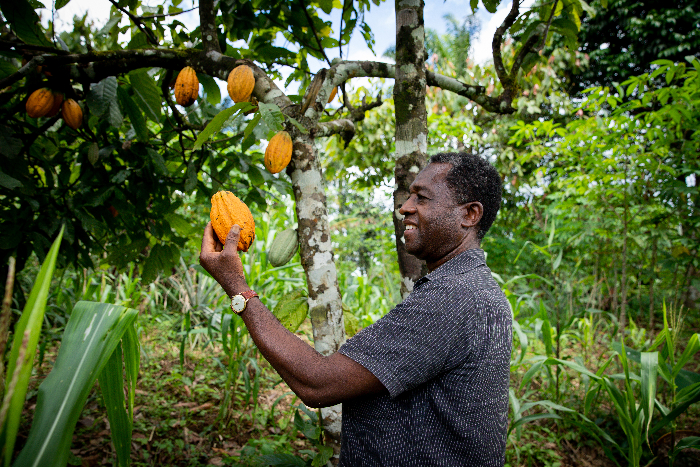The French love chocolate! They consume an average of 6.4 kg per person per year. A significant figure, and not just for our liver: the chocolate industry also has a social and environmental cost. To celebrate Easter as an enlightened gourmet, we offer you an overview of the different labels.

Cocoa, an exotic raw material
As the Foundation for Nature and Humans indicates, cocoa beans are grown in tropical environments with an extremely rich biodiversity. The environmental impact of cocoa monocultures is multiple: deforestation, monopolization of water resources, soil erosion… Not to mention the environmental footprint of a product imported from countries in the South, while widely consumed in the Northern Nations. The other problem of cocoa farming: the appalling conditions of the producers. Cheap chocolate often hides underpaid workers. According to UNICEF, more than two million children work today on cocoa plantations in Côte d’Ivoire, the main producing country in the world.
Before you buy chocolate, start by defining your fight. Is it social? Environment? The two ?
The social aspect: fair trade labels
According to reporter, the main fair trade guarantees are the following: a guaranteed minimum purchase price for producers, plus a development bonus for collective projects. Finally, there is a guarantee of traceability that manifests itself differently per label. In general, this is an “accounting” traceability: this means that the chocolate you eat contains a percentage of certified cocoa mixed with non-certified cocoa.
Each label has different requirements, for example:
- The Max Havelaar label is the most important fair trade label in France. For multi-ingredient products, the label has adopted a simple graphic charter: the logo on a black background indicates that all ingredients come from fair trade (eg chocolate, milk and sugar). The logo on a white background indicates that only one ingredient comes from this sector (eg cocoa).
- The Symbol of Peasant Producers label is the first label created and managed by producers themselves. In particular, this allows them to set their own guaranteed minimum price.
You can find the full list of fair trade labels via this link.

The environmental component
There are two certifications that guarantee compliance with environmental criteria: the so-called “sustainable” labels and the European organic farming label. For example :
- The UTZ label (which has merged with the Rainforest Alliance) contains environmental specifications that focus in particular on limiting the use of chemicals or the use of irrigation water. A zero deforestation policy is also applied. On the other hand, it does not guarantee a minimum purchase price or the quality of life of employees. This is a so-called sustainable label.
- The AB (Organic Farming) label guarantees a chocolate in which 95% of the ingredients come from an organic production method. According to reporter, the physical traceability of the cocoa beans is mandatory this time.
Again, the list is not exhaustive. There are other labels that meet environmental requirements, such as Biopartenaire, which guarantees 50% of the ingredients from organic farming.
Eating chocolate: a luxury!
To make a conscious choice, it is therefore important to remember that chocolate is a luxury product: to guarantee the producers a fair price, you must agree to pay a little more for it. In general, choosing a product that combines organic and fair trade labels should allow it to meet both social and environmental requirements. Note that the ‘bean to bar’ movement, which originated in the United States, is also developing in France. Voluntary association of chocolate makers engaged in producing virtuous chocolate, this movement consists of buying cocoa beans directly from producers and completely transforming these nuggets into a workshop.
For chocolate to remain a “cute” sin, we have to buy it at the right price!